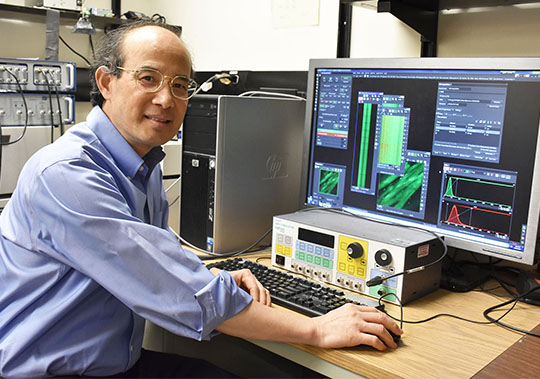Discovery of genetic heart condition leads to life-saving diagnosis for patients who experienced sudden cardiac arrest

Each year, approximately 60,000 Canadians experience cardiac arrests outside of a hospital. In about 10% of these cases, standard heart tests fail to determine the cause, making treatment difficult.
A few years ago, Dr. Jason Roberts (McMaster University) encountered such a case. Lauren had a cardiac arrest at 33. Two of her siblings also died from sudden cardiac arrest, 20 years apart. All three had appeared healthy, with normal test results. “For decades, my siblings and I had seen many specialists who looked for an explanation but couldn’t find one,” recounts Lauren.
Genetic testing later revealed that Lauren and her late siblings carried a mutation in a gene affecting a protein called RyR2. This protein plays a crucial role in releasing calcium from the heart muscle cells, a process that leads to heart muscle contractions. Eager to learn more, Dr. Roberts turned to Dr. Wayne Chen, a world-renowned expert in rare genetic heart conditions at the University of Calgary.
Their research uncovered that the genetic variant triggered a series of events that disrupted calcium release, causing unusual electrical activity, dangerously fast heartbeats, and, in rare cases, sudden cardiac arrest. This newly identified cardiac condition was named CRDS (RyR2 calcium release deficiency syndrome).
Before this discovery, CRDS was almost impossible to detect. Today, doctors treating patients with unexplained cardiac arrest can consider it as a possible explanation and request molecular and cellular tests at Dr. Chen’s lab.
For Lauren, it changed her life as a patient and mother. “Having a diagnosis impacted my care 100%, because I can now go to the gym knowing that I am getting the proper medication and carrying a defibrillator,” she says. The genetic tests also reassured her family: “My kids play sports competitively, so it was a big relief to know that none of them carried this genetic variant.”

However, Dr. Chen’s lab is one of a few labs in the world capable of identifying CRDS, limiting patient access to this crucial diagnosis. Drs. Roberts and Chen have recently found that a pacing technique that causes the heart rate to briefly speed up could be a simpler and more accessible way to diagnose patients immediately at major hospitals.
“Our hope is that our simple pacing protocol will be part of routine examinations of high-risk cardiac patients and become a standard of care in every cardiac center around the world,” explains Dr. Chen. Drs. Chen and Roberts are now evaluating this pacing test in a study across 30 medical centers in Canada and around the globe. Once validated, the test could help doctors better identify high-risk patients and explore targeted therapies.
The team is also building a large registry of CRDS patients to better understand this condition. “What we learn about CRDS may also provide insight into the mechanisms underlying sudden cardiac death in other rare and potentially common forms of heart diseases in the future,” says Dr. Roberts.
Lauren has no doubt this research makes a huge difference to patients and their families: “It allows us to learn more about genetic cardiac conditions such CRDS and may prevent others from losing a sibling or a child.”
At a glance
Issue
Each year, approximately 60,000 Canadians experience cardiac arrest outside of a hospital, with 10% of cases remaining unexplained. Some of the underlying cardiac conditions are almost impossible to detect in routine heart tests.
Research
Receiving a diagnosis is crucial for patients with unexplained cardiac arrests. Drs. Chen and Roberts’ discovery of a new genetic heart condition and development of ways to test for it are offering long-awaited answers and more targeted treatments to patients like Lauren. Dr. Chen and Dr. Roberts’ research on cardiac arrhythmias is supported by the Canadian Institutes of Health Research and Heart & Stroke.
- Date modified: